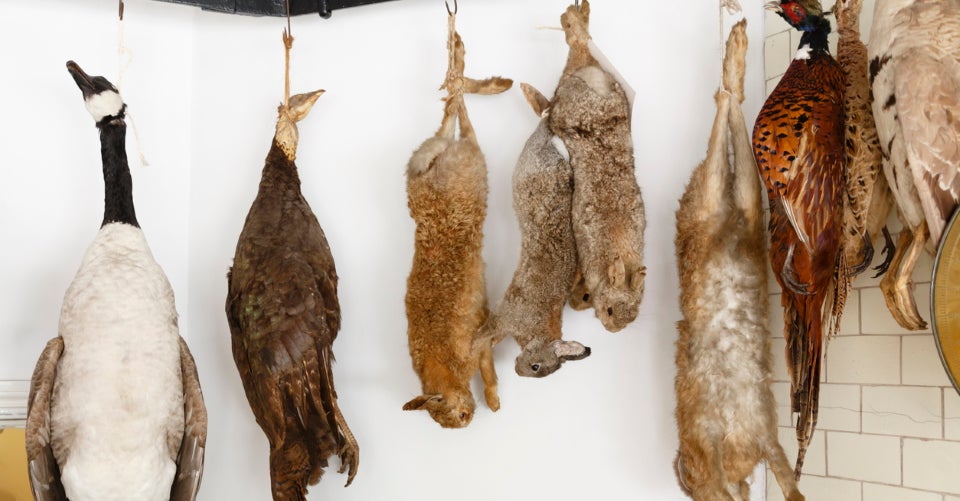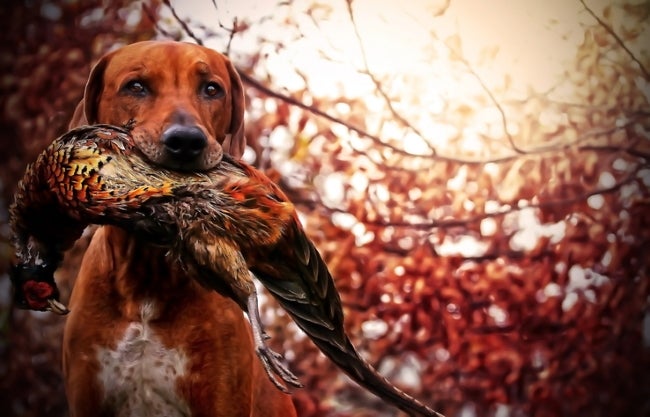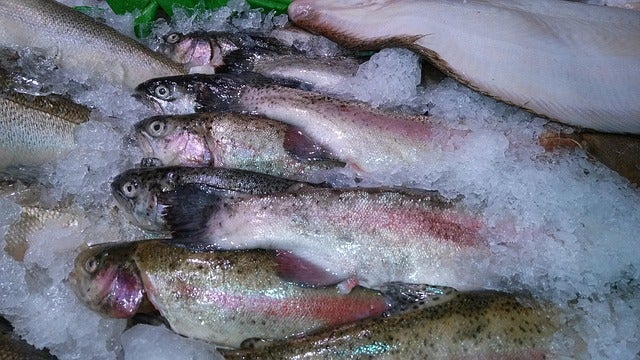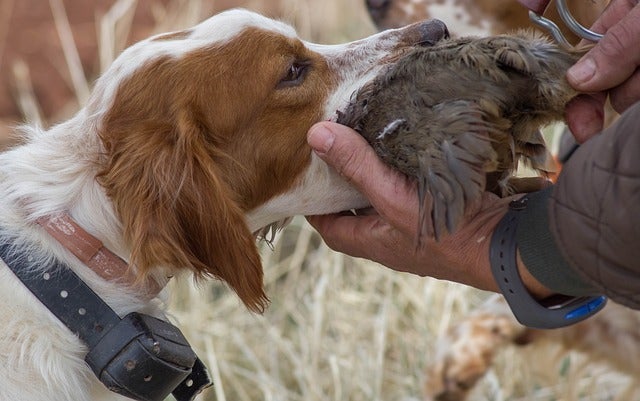
Our Editors independently research, test, and rate what we feel are the best products. We use affiliate links and may receive a small commission on purchases.
We are blessed, in this society, to have electricity and refrigeration. But, when you are in the wilderness and don’t have access to these modern-day conveniences, alternative preservation methods must be employed.
Certainly, your priority should be to make full use of the game/fish you have worked (or played) so hard to secure. Waste just isn’t part of the plan.
Prepping For The Worst
What happens if the aforementioned modern conveniences just go away? Would you be prepared to survive a while? What was once considered primitive preparation of meats and fish is now coming back into play. It can’t hurt to learn some of our ancestors tried and true means of preservation.
The threats that face this nation are many and should be taken seriously. Could you take care of your family if the lights went out? What if you chose to live off grid? Or, if you are out in the wilderness for a prolonged period of time, with only the bare necessities at your disposal?
Game Hunting
Whether you are a rifle or a bow hunter the thrill of tracking game is nearly instinctive. When the rifle jerks back with the powerful release of a bullet our expectations jump. Your eyes follow the invisible path of the round and you see that you have been successful in your attempt to bring down a rabbit.
You hurry to the fallen creature and assure a humane kill with a swift cut of the throat. Lifting the carcass from the hind legs, you make sure the blood flows until none remains.
You continue with your hunt after placing the rabbit in a small bag attached to your belt. It is a lucky day and within an hour you manage to bag two more rabbits. You return to your campsite and begin to prepare your bounty for later consumption.
Cleanliness is paramount to any kind of raw meats be it beef or squirrel. Be sure your hands are clean. A good practice is to have a large spray bottle of water mixed with chlorine bleach.
Use one tablespoon per four cups of water. Spray all the surfaces that you will be working with or on or with and dry. Your knives need to be sharpened to near surgical edges.
If you are not interested in preserving the pelts of squirrels or rabbits, cut through the skin of the midsection of the small animal all the way around the animal. Pull the skin apart and back toward the other end of the carcass. You may split down the underside to make this easier.
Pull all of the skin off to the head and feet. When done, cut off the heads and feet. Carefully open the carcass from the underneath, beginning from the anus and back toward the front.
Reach in and pull all the innards out without breaking into the stomach or intestines. Discard appropriately. The heart and lungs can be eaten so you may want to save those. Some folks like the livers of small animals. It is a very personal choice.
Freezing
Freezing is the most popular way to preserve meat but sometimes you just can’t put your bounty right into a freezer. Other methods include curing and smoking, drying, corning, canning and sausage making. Some people do not like the gamey taste of non-domestic animals.
For them, grinding the meat as sausage allows for heavier seasoning for taste. You can also mix wild game with hamburger to provide a healthful, lower cholesterol choice for hamburgers or meat loafs.
Fish are usually frozen after preparation for cooking. They can also be canned or pickled for safe preservation.
There are many steps to meat preparation that carry across the board on animals from fish, snakes, rabbits, and squirrels to deer, elk and beef.
Opening Steps to Preservation
- After a kill, quickly remove all internal organs
- Skin the animal quickly to allow meat to cool down faster.
- Cut very thin slices (no more than ¼” thick) from the carcass. It is best to cut across the grain as it improves the meat tenderness and shortens the drying time required.
- Remove all visible fat from the meat. This ensures better safety of the product if you are choosing to dry or cure it.
- If drying is your choice, hang the meat strips across a sterile drying environment. (Don’t forget to spray surfaces with your bleach solution!) Do not allow meat to touch other pieces of meat in this process.
- Should you choose to smoke your meat/fish, this process is accomplished by allowing it to cook very slowly, over low heat from the embers of a hardwood fire, for a prolonged period of time. When smoking for preservation purposes, be sure to use plenty of salt, and allow to smoke until all moisture is eliminated. Rinse well prior to consumption.
Sun-Drying
One method of preservation is sun-drying. Especially if you are in the wilderness without access to a food dehydrator. You can clear the branches of part of a tree or brush. Cut a small hole at the end of each piece of meat to be dried.
Pull a string through the slit and hang it on the tree branches that you have sprayed with your bleach mixture and allowed to dry. Again, do not let meat touch other meat hung nearby.
Sun-drying works best in full sun and warmer temperatures. Allow your meat to hang for three to five days until it becomes stiff with a dark, shriveled look. It will resemble beef jerky in texture. Store in a cool, dry place.
If flies are an issue, use a tightly woven netting material to loosely surround your drying meat. It must be open enough to allow sun and air in with no obstruction, but not the pesky flying critters that want to take part in the party!
Preserving Fresh Fish
If wild game is not your sport of choice, perhaps fishing fills your pond! When cleaning fish, hold it from the head and then use quick short strokes from the tail up the body to the gills with a dull knife. Yeah! One less to sharpen!
Rinse the fish and place it on a clean, flat surface, belly up. Remove the anus by cutting around it in a “V” shape. Split it by cutting from the anus up to the head. And yes, you need a sharp knife for that one!
Pull out the inner organs in a swift, careful motion. Try not to open the stomach or intestines. This can foul the fish and make it unusable. Rinse well and remove the head.
Cut out the gills and large blood vessels that may lie near the spine. Any fish more than four inches long should be gutted and either scaled or skinned.
There are more things to pay attention to when you are trying to preserve fish. Be sure that the fish you are working on is not already spoiled. Cooking will not render a spoiled fish edible.
There are several things to look for. These include:
- Strong or peculiar odor
- Eyes sunken in
- Color that seems off. (Scales should not be faded, gills should be red to pink)
- Dents (If you press in with thumb or finger and it doesn’t smooth back out.)
- Slimy (Moist or wet is fine)
A spoiled or rotten fish can cause nausea, cramps, vomiting, diarrhea and more. Any extreme itching or metallic taste is cause for concern. In some cases, spoiled fish has caused paralysis. Symptoms appear soon after eating fish from one to six hours. Induce vomiting immediately if these symptoms exhibit.
Fish spoils very soon after death. This is even more true in hot weather. You should prepare fish for eating as soon as you can. Ice fishing carries an advantage of cold weather preservation.
Keep fish in a cooler until ready to prepare. If you have no way to ice the fish down, prepare it for drying. Slices need to be very thin. Salt the fish heavily on both sides before you hang it to dry. Rinse the salt off before eating it.
Nothing is more delicious than fish cooked/smoked over an open fire. Impaled with a branch and held over fire to cook, works. You can also pack a fish into a ball of clay and then bury it in the hot coals of a fire. When the clay is hardened, remove and break it open to reveal a delightful fish dinner.
You can ensure your fish is truly cooked and ready to consume if the meat flakes off. It will last a little longer if it is smoked or fried. Sun-drying is not a preferable way of preserving fish as it is riskier than with other animal protein sources.
Bird Preparation in the Wilderness
Once you have made the kill of a bird, retrieve it and prepare it immediately. You can pluck or skin the bird to remove feathers. If plucking, try to not let feathers touch the actual meat of the bird.
If you decide to skin a bird, cut the skin just above the feet all the way around. Then cut from legs to the tail tearing off the skin up to the neck.
A great deal of the nutrition of a bird is in the skin, so plucking may be preferable. It is more tedious, but certainly gives more bang to the flavor, nutrition and satiety.
Again, do not let feathers come in contact with bird meat. It opens the door to more parasites.
Birds that eat seeds have a craw. When you open the body cavity, scoop out the entrails, save the craw, heart and liver. Open the bird up from stomach to the rib cage.
Be sure you have removed all internal organs. Cut off the feet. Let cool before cooking. You can put it in cool, salty water and let sit for a few hours. This helps remove strong gamey taste and also helps tenderize the meat.
It is advisable to boil scavenger birds for at least 20 minutes before actually preparing and cooking them. This ensures a kill of all parasites. You can then cook by boiling in new water or roasting the bird over a spit.
Conclusion
No matter what lies ahead, no matter what your purpose; to continue forward we need protein. Meat should top the list of necessities when the going gets tough, or the tough want to tuff it out in the wilderness.
- Smoke or Dry Meats
This is a popular way to preserve poultry, small game, fish and other meats.
If done thin enough, the dried meat can last for weeks or even months if stored in a tightly sealed, dry/moisture proof container. - Canning
If conditions are right, canning can be a great method of preserving meat for long-term use. Canned properly, the goods can last for years. You must have the right equipment to can foods. It is not a simple practice and you should learn to do it long before those lights go out. There are many books on canning. It would be a good idea to read up on the different techniques and what equipment is needed to do it right. - Salt (or Dry) Cured
If you desire your meats to last longer with this type of preservation, you need to include sodium nitrite and potassium nitrate in your processes. It can take anywhere from two weeks to an entire year depending on what meat and what method you have decided to use. You eat salt cured meats every day in the form of ham, bacon, salt pork and corned beef.
Explore the many ways to preserve food for long term long before you need to store foods in that way; be it by choice, or by necessity. If it never happens that it is due to necessity, so much the better! In truth, the knowledge of these skills can help you stretch your food dollars further.
Make a habit of including your children in the practices of food preservation. If they start young and learn the ins and outs of what to do and what not to do, it will last them a lifetime. None of us know what lies ahead in this uncertain world and these uncertain times.
We have never had life easier or better than this. There is an old saying, “Into each life some rain must fall.” Be prepared for any storm that may come.
It is imperative to properly preserve any meat that will be consumed by humans. To do so improperly can result in illness or worse. Take the time to do each step properly and your finished products can be part of your diet for a good amount of time to come!



